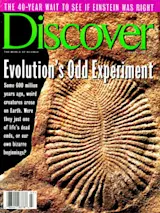No planet goes through more changes than Mars does, and no planet puts our assumptions more to the test. Say its canals don’t really exist. No problem; Mars then offers intriguing dry riverbeds, a strange soil chemistry that spews oxygen at the slightest provocation, and evidence of ancient microbes that may still infect the Red Planet.
Last autumn two American and one Russian spacecraft blasted off to help solve the Martian mysteries. Two are still en route (the Russian craft burned up in our atmosphere), and more will be launched every two years for the foreseeable future.
Why the biennial agenda? Do we synchronize Mars missions with congressional elections?
Actually, the launch windows take advantage of the realignment of Earth and Mars that occurs every 25 or 26 months, offering an opportunity to make a low-energy trip. On those occasions Mars comes closest to us, in a configuration called opposition, ...














